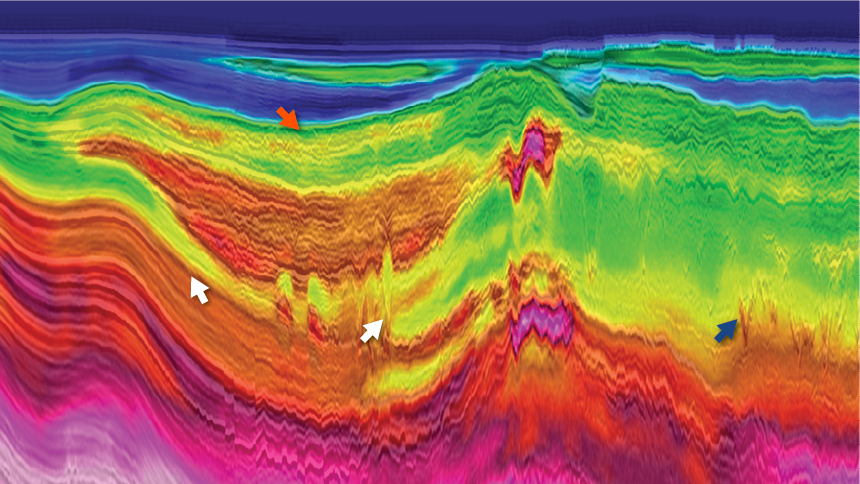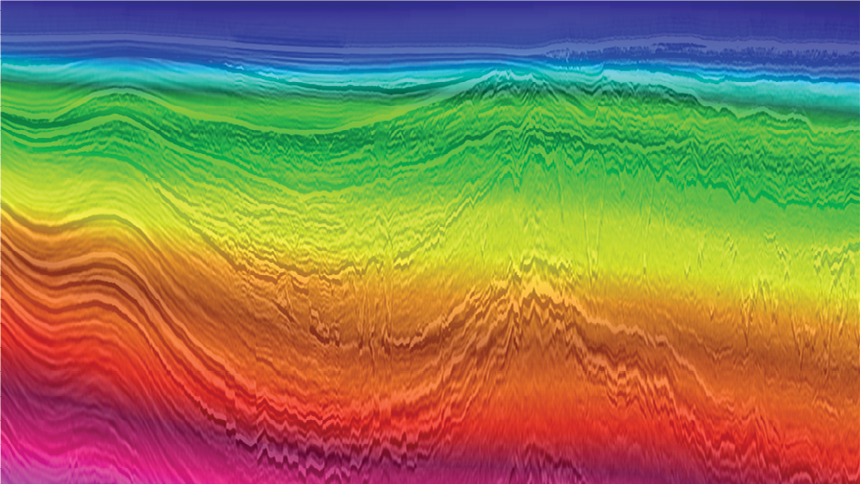- Reduced dependence on very long offset: uses diving waves and reflections
- Delivers models with correct long wavelength information: avoids cycle-skipping artefacts
- Accurate deep velocity models: removes traditional migration isochrone artefacts
- No density model or hard model boundaries are required to generate reflections
- Cost-effective: reflected events can be used without solving two different wave-equations in the forward and backward propagation steps
- More accurate: unique wave equation implementation is superior to methods based on the first-order approximations and perturbation theory.
The PGS FWI solution uses both diving waves (wavefronts continuously refracted upwards through the earth) and reflected waves to update the velocity model. The use of reflection information relaxes the traditional dependence of FWI upon very long offset acquisition. Background velocity model updates are completely separated from reflectivity information, thereby avoiding crosstalk artifacts in the output velocity model.
A proprietary dynamic warping correction avoids traditional cycle-skipping challenges, and the method does not depend upon an accurate starting model of velocity or any prior model of density. The PGS FWI solution is also extendable for multi-parameter updating, so that vertical velocity and epsilon are updated, and delta is fixed.
PGS has recently developed PGS Ultima, an evolution of FWI which yields models of both reflectivity and velocity.
West of Shetland. Depth slice taken through the overburden. The final velocity model from FSB Vision FWI is overlain onto the Kirchhoff PSDM stack and highlights the level of resolution achievable enabling a clear image of polygonal faulting (blue arrow) and injectites (white arrows).
Contact a PGS expert
If you have a question related to our Imaging & Characterization services or would like to request a quotation, please get in touch.

